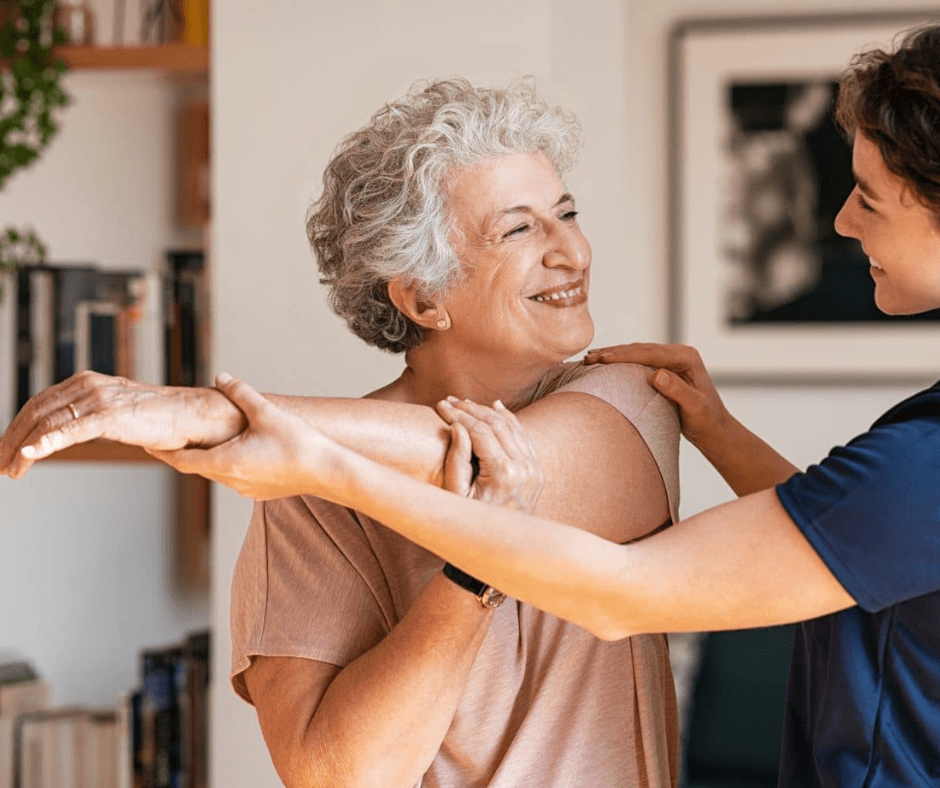Get a Move On – Simple Ways to Incorporate Exercise for Seniors
One of the most repeated advice by any health professional is to stay active and exercise consistently. Exercise for seniors can be a challenge due to their unique health considerations. However, physical activity can provide a wide array of benefits and longevity.
Consider Edna in Arizona. In 2014, she took the internet by storm when her trainer shared her workouts on his Instagram. Edna, 97 at the time, had been working out with her trainer once a week for over 10 years. Her best advice for staying young? “Never let yourself get weak.” We couldn’t agree more, Edna!
How Exercise Positively Impacts Seniors
Regular exercise can benefit for any age both physically and mentally. For seniors, regular physical activity and aerobic exercise results in a reduced risk of chronic diseases like diabetes, heart disease, and some cancers. Additionally, a consistent exercise routine can help seniors build muscle and stability. With falls being the most impactful injury among seniors, balance is incredibly important. Studies have proven that those who are physically active were 50% less likely to have cognitive impairment.
There are several key areas seniors should focus on:
- Strength: For those who are frail, strength training is a great place to begin with. The machines provide balance and a suitable weight can be chosen to practice.
- Cardiovascular: A sedentary lifestyle will cause the heart to pump less blood with each beat as it weakens. To avoid or reverse this, it is recommended of 30 minutes daily moderate cardio conditioning which is broken into 10 min sessions.
- Flexibility: Flexibility can greatly affect quality of life – from bending down to put on shoes to reversing into a parking spot. To improve the flexibility, add 15 minutes of stretching to the end of a workout, after muscles are warm.
- Balance: Feeling confident moving around is half the battle. For those who have taken recent falls or are just getting started, balance exercises in low-heeled shoes are a great place to start.
Exercise is an important aspect of overall wellbeing. The most important thing to do is to just get started.
- Water Aerobics: For seniors suffering from joint pain and arthritis, water workouts are ideal. The water’s buoyancy takes stress off the joints while its resistance allows for some strength training. Overall, it can provide strength, balance, and flexibility workouts all in one. Consider adding flutter kicks, aqua jogging, leg lifts, and arm curls to your aqua aerobics routine.
- Bodyweight exercises: Bodyweight moves make strength training accessible and can be done anywhere with no equipment. Lying hip bridges, curl ups or sit ups, lying or standing leg raises, and chair squats are very effective options.
- Balance work: Although the motions are small, balance work makes a huge difference in overall mobility. Seniors can try a toe stand, using a chair for balance as they lift their heels off the floor and stand on their toes before lowering down again. A heel-toe walk and practicing shifting weight from one leg to the other are also great for balance.
- Chair yoga: Chair yoga takes the strain off the lower body and allows seniors to work their upper body. It is also linked to better sleep and lower depression rates for older adults. A chair yoga practice might include seated twists, overhead stretches, and seated mountain pose.
- Walking: Walking is a great, low stress form of exercise. For seniors, walking can be easily incorporated by walking the perimeter of a building, finding an easy to moderate trail, and even joining a race that is walk-friendly.

